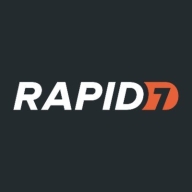

IBM Security QRadar and Rapid7 MDR offer competing security intelligence solutions. IBM Security QRadar boasts strong detection mechanisms, while Rapid7 MDR is highlighted for its comprehensive threat coverage and response efficiency, presenting it as a compelling option.
Features: IBM Security QRadar provides strong anomaly detection, seamless integration with existing security infrastructures, and advanced data processing capabilities. Rapid7 MDR offers advanced threat detection, automation, and a comprehensive approach to vulnerability management, which enhances its security effectiveness.
Room for Improvement: IBM Security QRadar could improve its integration complexity and reduce the high initial setup costs. Enhancing user interface intuitiveness and reducing false positive rates are also areas for development. Rapid7 MDR might expand its customization options, refine incident response times further, and continue improving its scalability to handle larger enterprise environments.
Ease of Deployment and Customer Service: IBM Security QRadar offers flexible deployment but faces integration complexities. Rapid7 MDR is noted for its streamlined deployment process and proactive, responsive customer service, providing a smoother overall experience.
Pricing and ROI: IBM Security QRadar involves higher initial setup costs but offers a significant long-term ROI with its deep analytics capabilities. On the other hand, Rapid7 MDR presents a lower initial cost and a quicker ROI due to its efficient threat management, making it appealing for businesses focused on budget efficiency and value.


IBM Security QRadar (recently acquired by Palo Alto Networks) is a security and analytics platform designed to defend against threats and scale security operations. This is done through integrated visibility, investigation, detection, and response. QRadar empowers security groups with actionable insights into high-priority threats by providing visibility into enterprise security data. Through centralized visibility, security teams and analysts can determine their security stance, which areas pose a potential threat, and which areas are critical. This will help streamline workflows by eliminating the need to pivot between tools.
IBM Security QRadar is built to address a wide range of security issues and can be easily scaled with minimal customization effort required. As data is ingested, QRadar administers automated, real-time security intelligence to swiftly and precisely discover and prioritize threats. The platform will issue alerts with actionable, rich context into developing threats. Security teams and analysts can then rapidly respond to minimize the attackers' strike. The solution will provide a complete view of activity in both cloud-based and on-premise environments as a large amount of data is ingested throughout the enterprise. Additionally, QRadar’s anomaly detection intelligence enables security teams to identify any user behavior changes that could be indicators of potential threats.
IBM QRadar Log Manager
To better help organizations protect themselves against potential security threats, attacks, and breaches, IBM QRadar Log Manager gathers, analyzes, preserves, and reports on security log events using QRadar Sense Analytics. All operating systems and applications, servers, devices, and applications are converted into searchable and actionable intelligent data. QRadar Log Manager then helps organizations meet compliance reporting and monitoring requirements, which can be further upgraded to QRadar SIEM for a more superior level of threat protection.
Some of QRadar Log Manager’s key features include:
Reviews from Real Users
IBM Security QRadar is a solution of choice among users because it provides a complete solution for security teams by integrating network analysis, log management, user behavior analytics, threat intelligence, and AI-powered investigations into a single solution. Users particularly like having a single window into their network and its ability to be used for larger enterprises.
Simon T., a cyber security services operations manager at an aerospace/defense firm, notes, "The most valuable thing about QRadar is that you have a single window into your network, SIEM, network flows, and risk management of your assets. If you use Splunk, for instance, then you still need a full packet capture solution, whereas the full packet capture solution is integrated within QRadar. Its application ecosystem makes it very powerful in terms of doing analysis."
A management executive at a security firm says, "What we like about QRadar and the models that IBM has, is it can go from a small-to-medium enterprise to a larger organization, and it gives you the same value."
Standing up an effective detection and response program isn’t as simple as buying and implementing the latest security products. It requires a dedicated SOC, staffed with highly skilled and specialized security experts, and 24/7 vigilance using the best technology to ensure stealthy attackers have nowhere to hide. Creating such a program can be expensive, difficult to maintain, and provides limited assurance that you’ve advanced your overall security. Rapid7 MDR is built from the ground up to help security teams of all sizes and security experiences strengthen their security posture, find attackers, and stay ahead of emerging threats. Our MDR service uses a combination of security expertise and technology to detect dynamic threats quickly across your entire ecosystem, providing the hands-on, 24/7/365 monitoring, proactive threat hunting*, effective response support, and tailored security guidance needed to stop nefarious activity and help you accelerate your security maturity.
We monitor all Managed Detection and Response (MDR) reviews to prevent fraudulent reviews and keep review quality high. We do not post reviews by company employees or direct competitors. We validate each review for authenticity via cross-reference with LinkedIn, and personal follow-up with the reviewer when necessary.